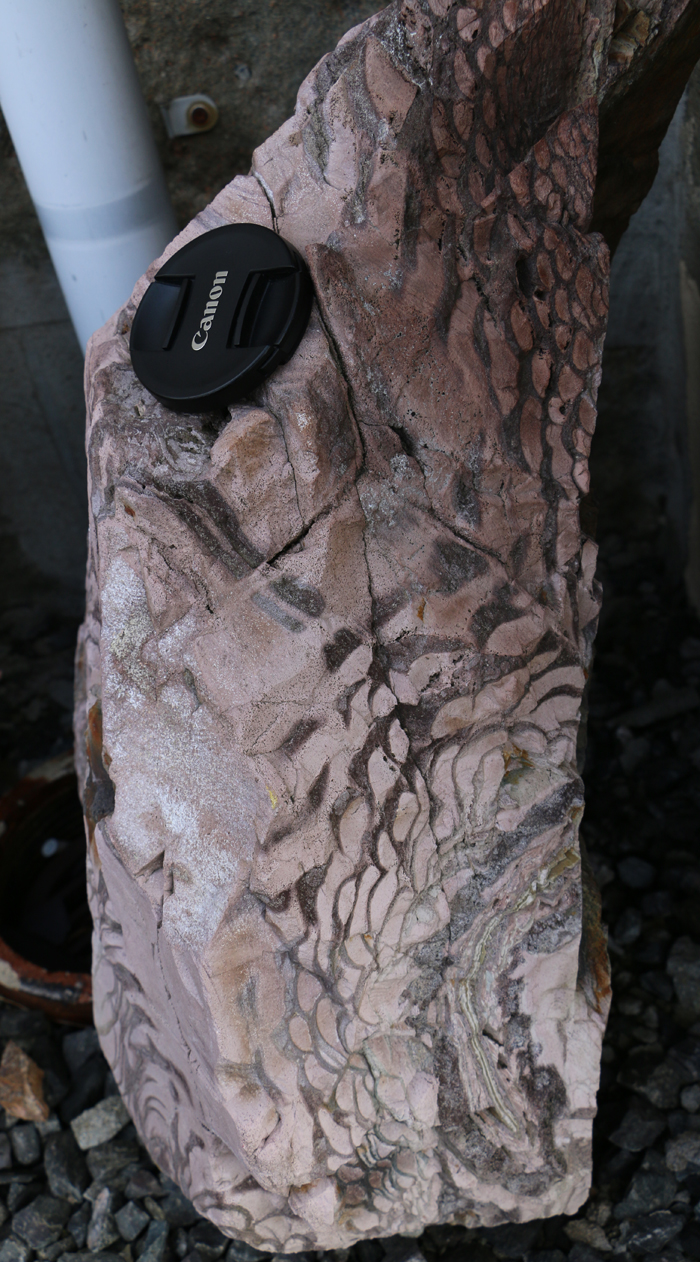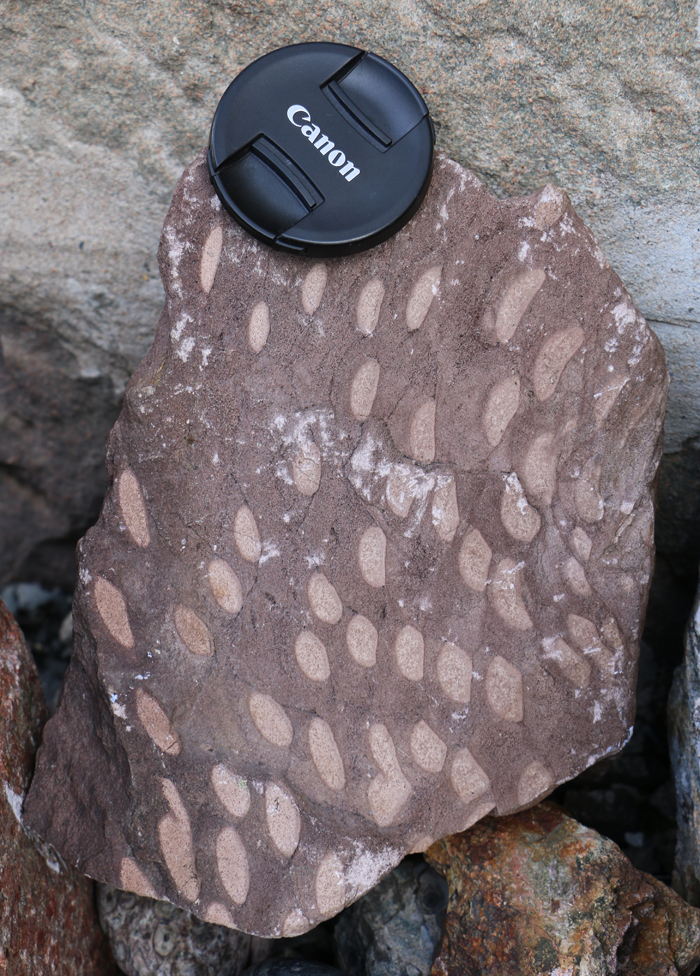Any readers have any idea what this strange rock is? It’s got wild patterns!


These samples were in the garden of a local rockhound in Lerwick; I have zero idea what the mineralogy is; I was just stunned by the “scale-like” pattern of gray and pink.

I’d be eager to hear your ideas what this might be. Thanks very much in advance!


Is it micritic limestone? Or marl?
I don’t think so – I suspect a rhyolitic composition, based on other stuff I’ve seen on the island (Ronasvoe granite and spherulitic felsite west of that). Doesn’t show any signs of solution weathering, but then again who knows how fresh these boulders are?
| agree with you, seems like a rhyolith the grey color are Vitric layers, this structure is common in domes
I’ll offer a guess for the first few (all but the last). More of an impression really and the first thing that popped into my mind is that they are sloughed/contorted beds of turbidites possibly with prior flame structures before (or during) the contortion/sloughing. But… LOL! I may have been too well influenced by Robert R Berg!
I did my thesis in the Southern Province of Northern Ontario 35 yrs ago, where I encountered s’thg similar in the staurolite metamorphic zone. Basically incompetent &/or anisotropic rocks (possible carbonate in shale matrix like marl as mentioned already) will break apart when stretched and matrix flow around spaces left behind. Superb (if complex) stress/strain markers, as are the conglomerate pictures also. Look me up on Researchgate (“Regional cross section across the Southern Province adjacent to the Murray Fault Zone…”)
Just saw 1st reply. I was thinking sedimentary regime, but if it’s an igneous one the same applies – same rheologic contrast, same behaviour under strain – fabu pics and geology! thx4sharing & ‘talk’ offline if u wish
Why not contact the Shetland Geopark team?
…A terrific suggestion! It was Allen Fraser of GeoTours Shetland who showed me these – in the yard of a friend of his. He too was perplexed! 😀
Hello,
for the top pictures: It looks like isoclinal fold in the first picture. Could it have been a graphic granite that was extremely folded?
best wishes
Heidi
Too fine grained for a granite, but the color suggests a similar composition to the granite at Ronas Hill… maybe.
Boudinage during polyphase folding of hot strength layered tuff/interbanded flows?
I saw some formations called the folded rocks of Stromness when I was in Grytvikken, South Georgian islands. This may be something similar. Nice.
Could be a type of shale, have you tried setting light to bit of it, it may contain oil.
I haven’t — In Shetland, it’s considered rude to put a flame to rocks other people have displayed in their gardens. 😉
Clearly looks like a plant fossil.
Well, parts do… and other parts really don’t.
rhyolite!!
But then what’s the source of the scaly pattern?
Is it possible that it’s a piece of slag? Looks like mix of glassy and frothy layers poured over one another… otherwise i’d go with metamorphism(?) or flow banding of rhyolite/tuff
Hi everyone,
Allen Fraser of Shetland Geotours (who showed me these rocks at his friend Tom’s house), just sent me a note, and he has figured out the mystery: